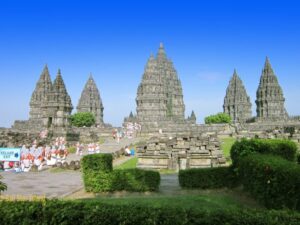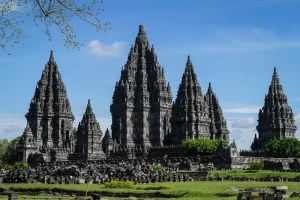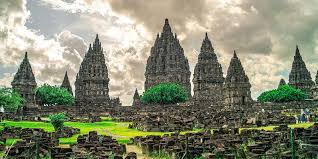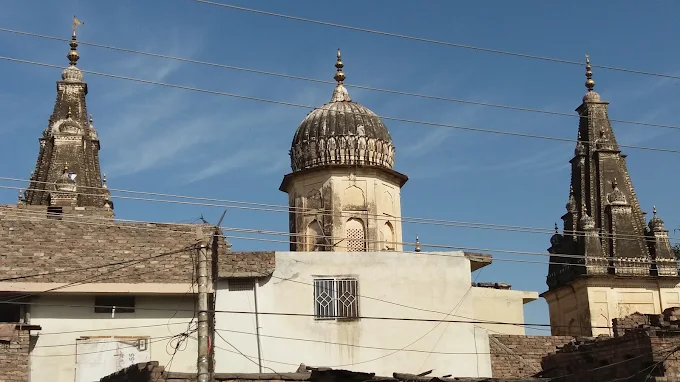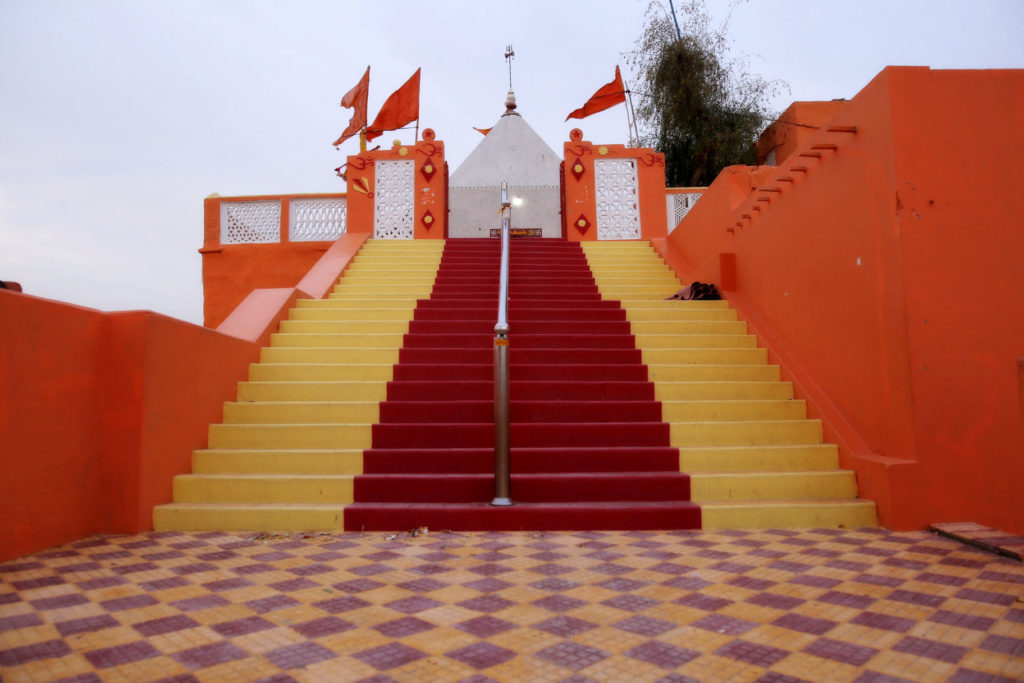✨ Introduction
Prambanan Temple, or Candi Prambanan, is the largest Hindu temple complex in Southeast Asia, and a crowning jewel of Indonesia’s ancient spiritual and architectural heritage. Constructed in the 9th century during the rule of the Sanjaya Dynasty, the temple complex stands as a majestic symbol of Hindu influence in the region, particularly during a time when Java was a thriving center of Hindu and Buddhist kingdoms.
🛕 Architecture and Layout
Prambanan showcases classic Dravidian temple architecture, which is distinctly Indian in style but locally adapted. The complex originally contained over 240 temples, though many have since been lost to time and earthquakes.
At the heart of the temple complex stand the Trimurti shrines, dedicated to the three primary deities of Hinduism:
-
Shiva (the destroyer) – the largest and central temple, standing 47 meters tall
-
Vishnu (the preserver)
-
Brahma (the creator)
Each of these main shrines is accompanied by a smaller temple dedicated to that deity’s vahana (vehicle):
-
Nandi (bull) for Shiva
-
Garuda (eagle) for Vishnu
-
Hamsa (swan) for Brahma
Intricate bas-reliefs and stone carvings narrate tales from the Ramayana, illustrating Indonesia’s deep connection with ancient Indian epics.
🕉️ Cultural and Religious Significance
The Prambanan Temple is not only a sacred space of Hindu worship, but also a testimony to the cultural harmony that existed between Hinduism and Buddhism in ancient Java. Built by Hindu kings near the Buddhist Borobudur Temple, it symbolizes religious tolerance and a shared cultural lineage.
The temple was primarily used for royal ceremonies and spiritual rites, and many inscriptions in Sanskrit and ancient Javanese script have been discovered at the site, shedding light on the rich religious life of that era.
🌍 Decline and Restoration
By the 10th century, the temple was gradually abandoned following the shift of power to East Java. Centuries of earthquakes and volcanic activity led to the collapse of many structures. However, major restoration efforts began in the 20th century, and today, Prambanan stands restored in part, proudly recognized as a UNESCO World Heritage Site since 1991.
📸 Tourism and Ramayana Ballet
Today, Prambanan is one of Indonesia’s most visited cultural landmarks, drawing both pilgrims and tourists. A major highlight is the Ramayana Ballet – a spectacular open-air performance that brings the ancient Indian epic to life with traditional Javanese dance and music, performed against the illuminated backdrop of the temple.
📖 Conclusion
The Prambanan Temple complex is not merely an archaeological treasure – it is a living legacy of Hinduism outside India, representing the transcultural spread of Sanatana Dharma through trade, diplomacy, and devotion. As a spiritual and historical beacon, Prambanan continues to inspire awe, reverence, and cross-cultural appreciation for the richness of Hindu tradition in Southeast Asia.
